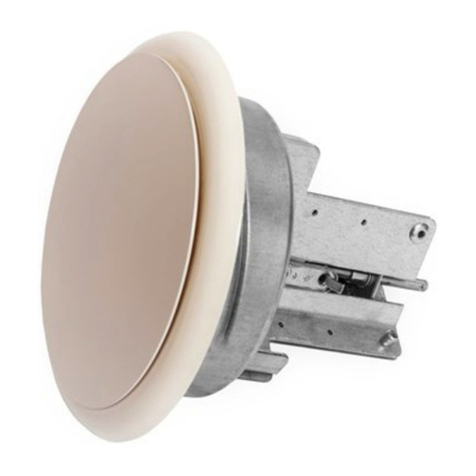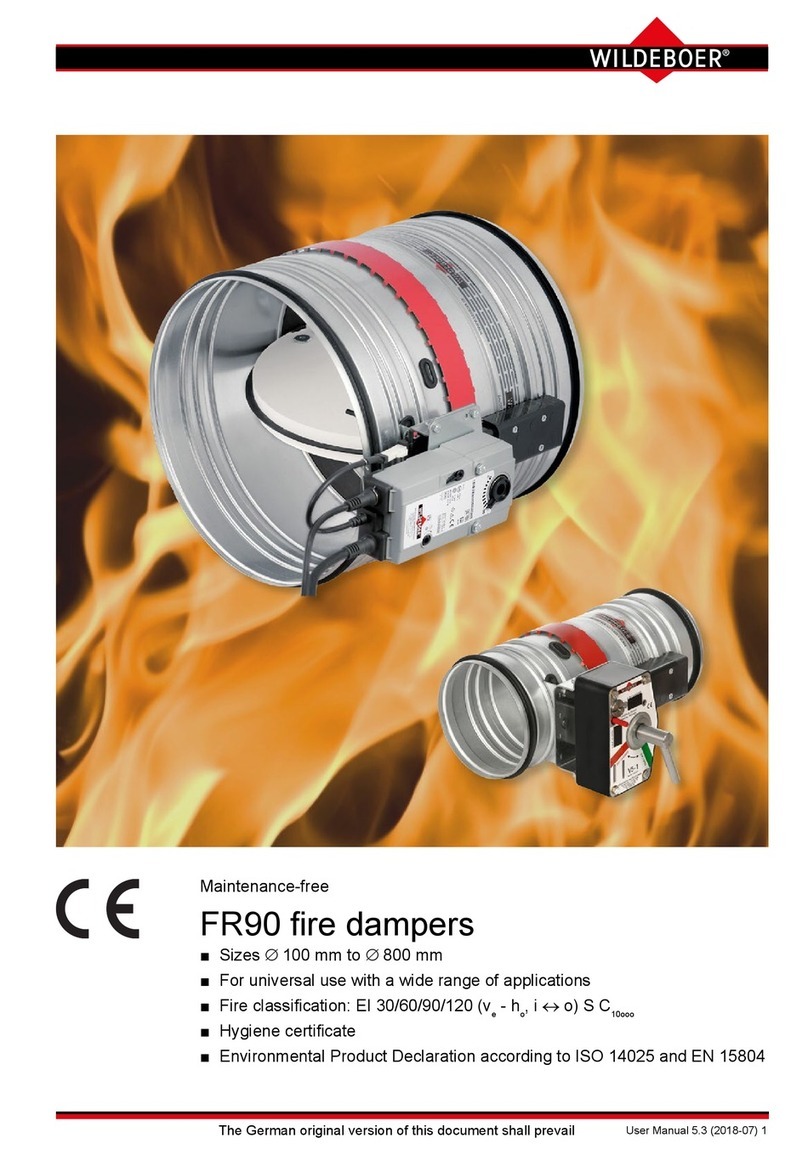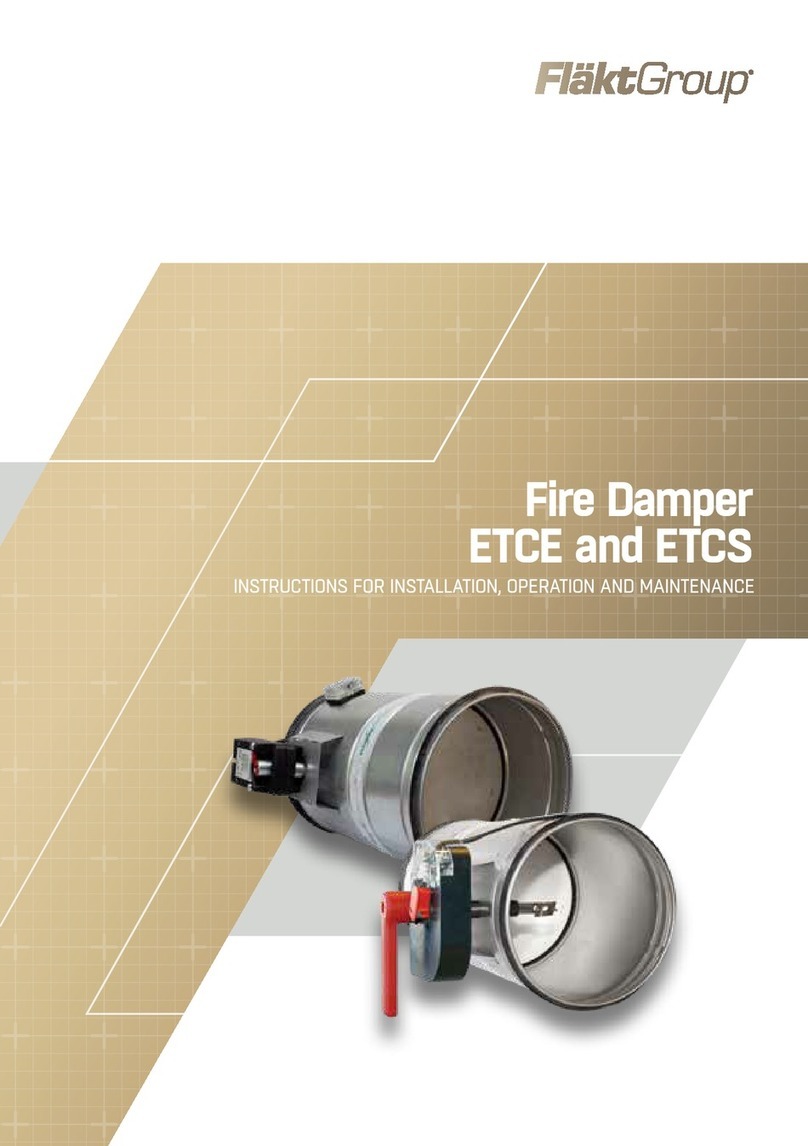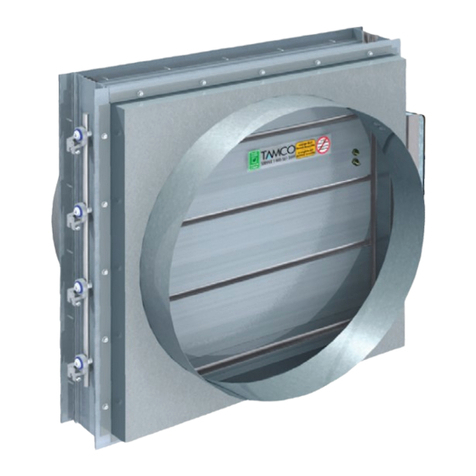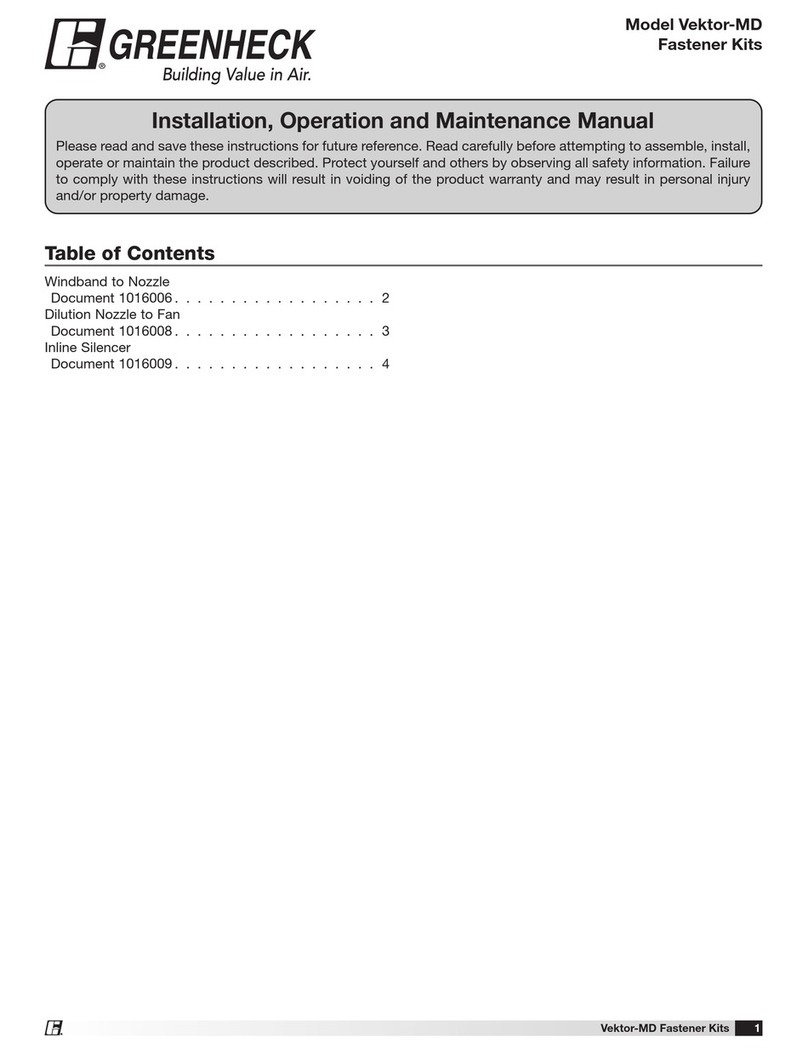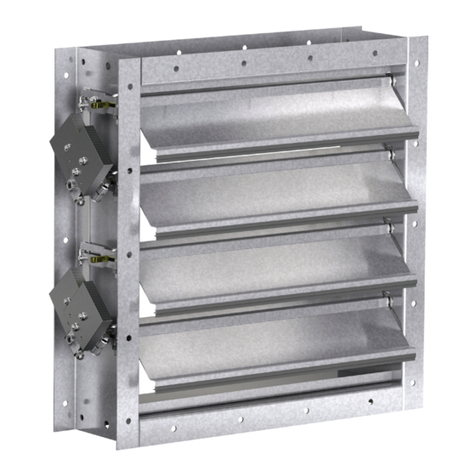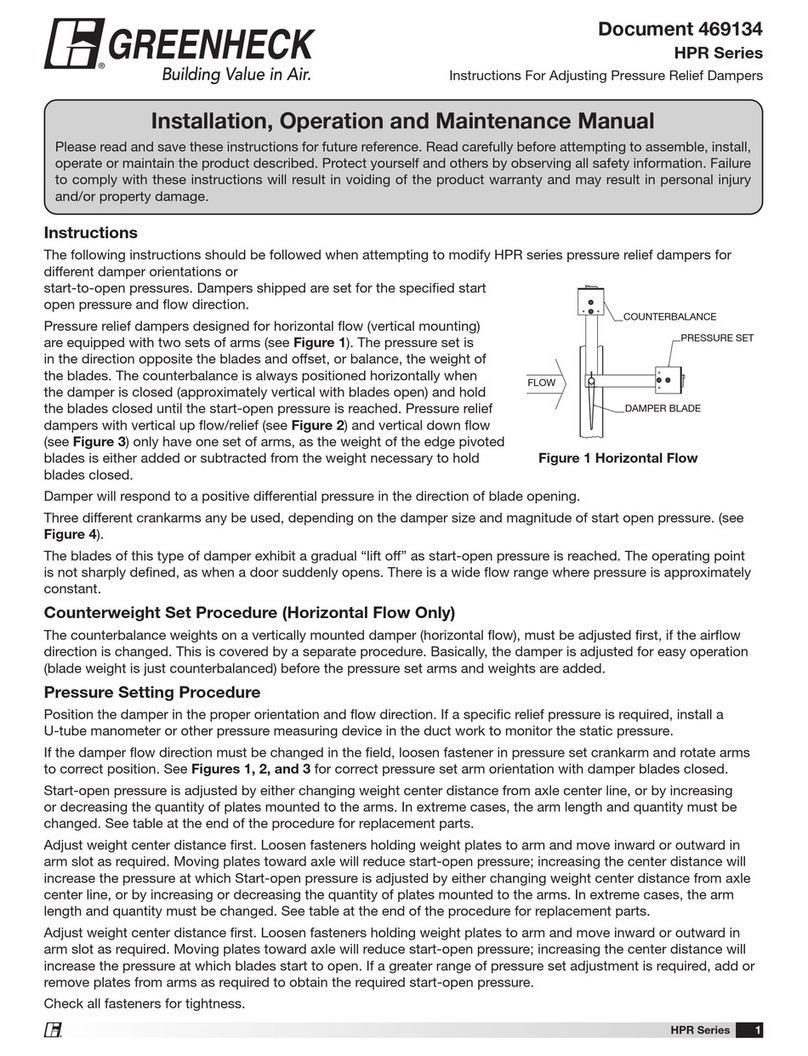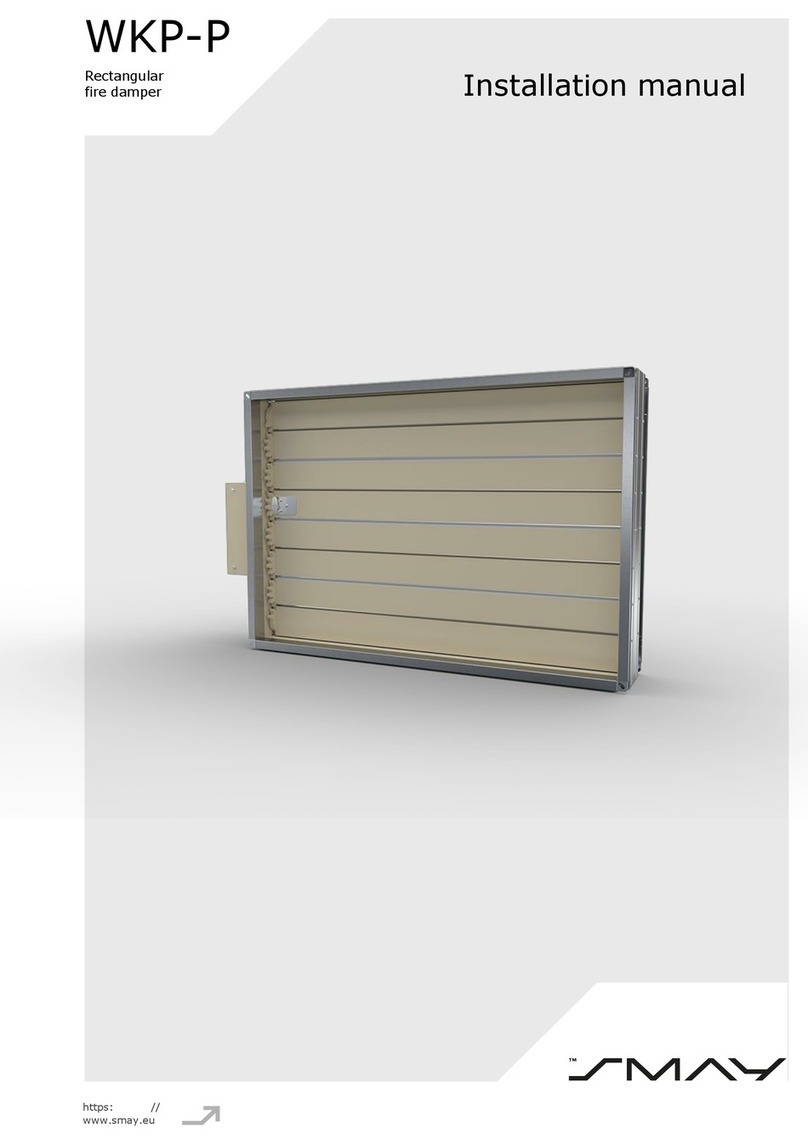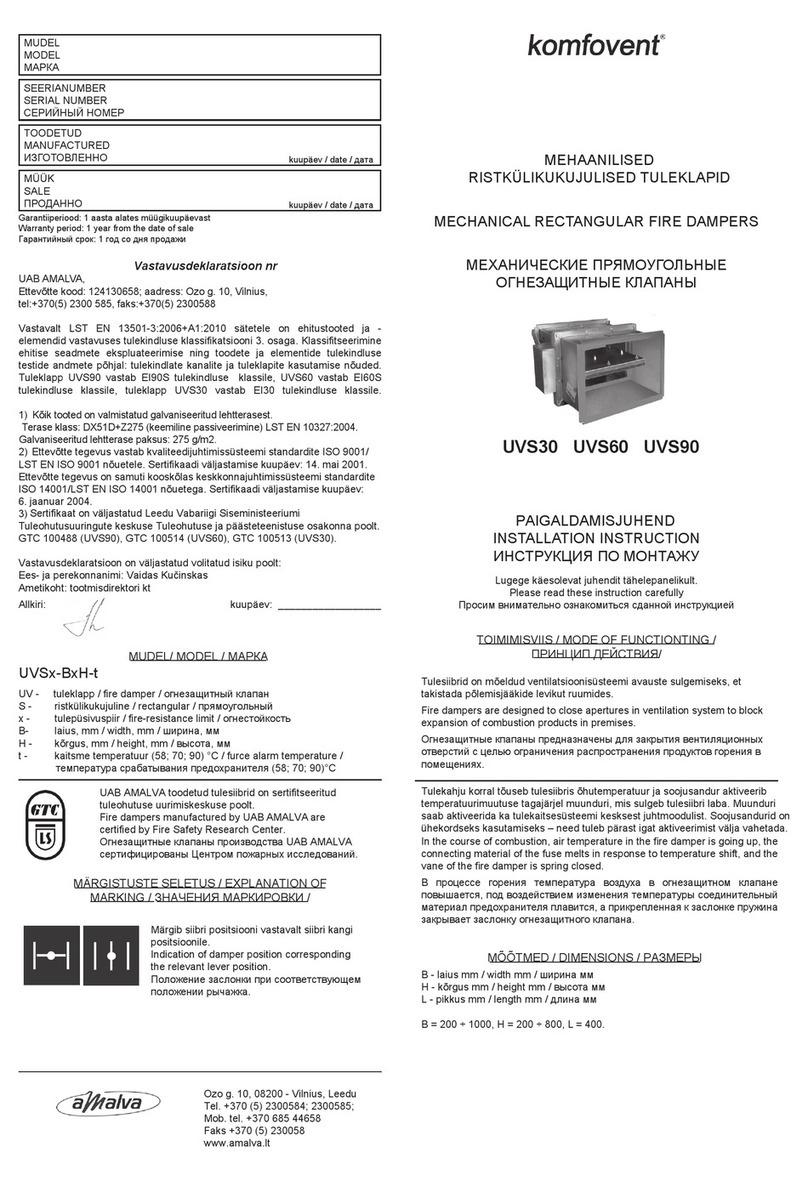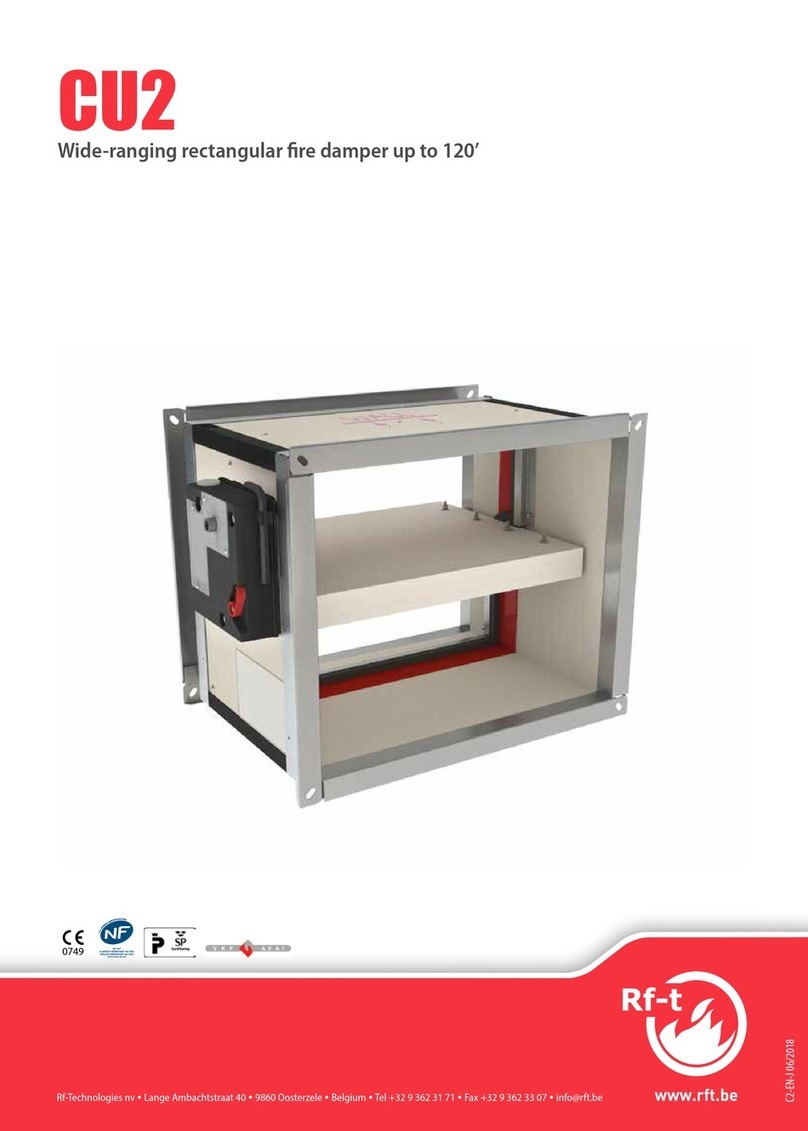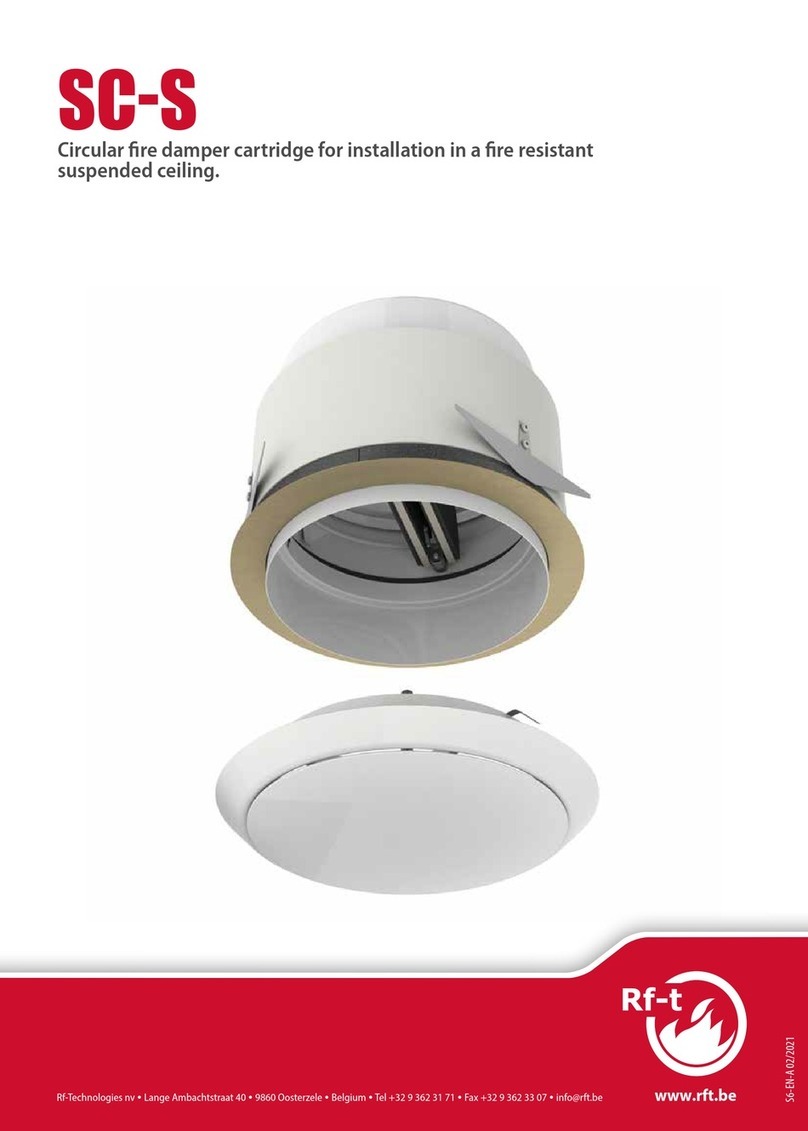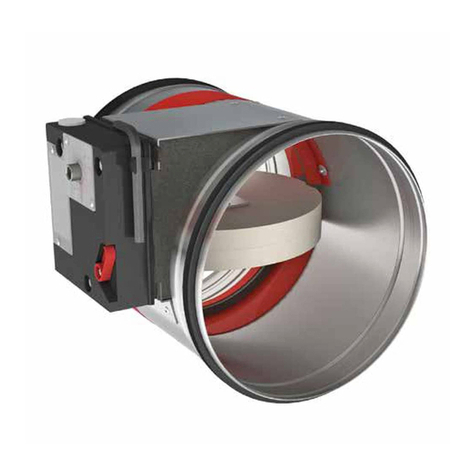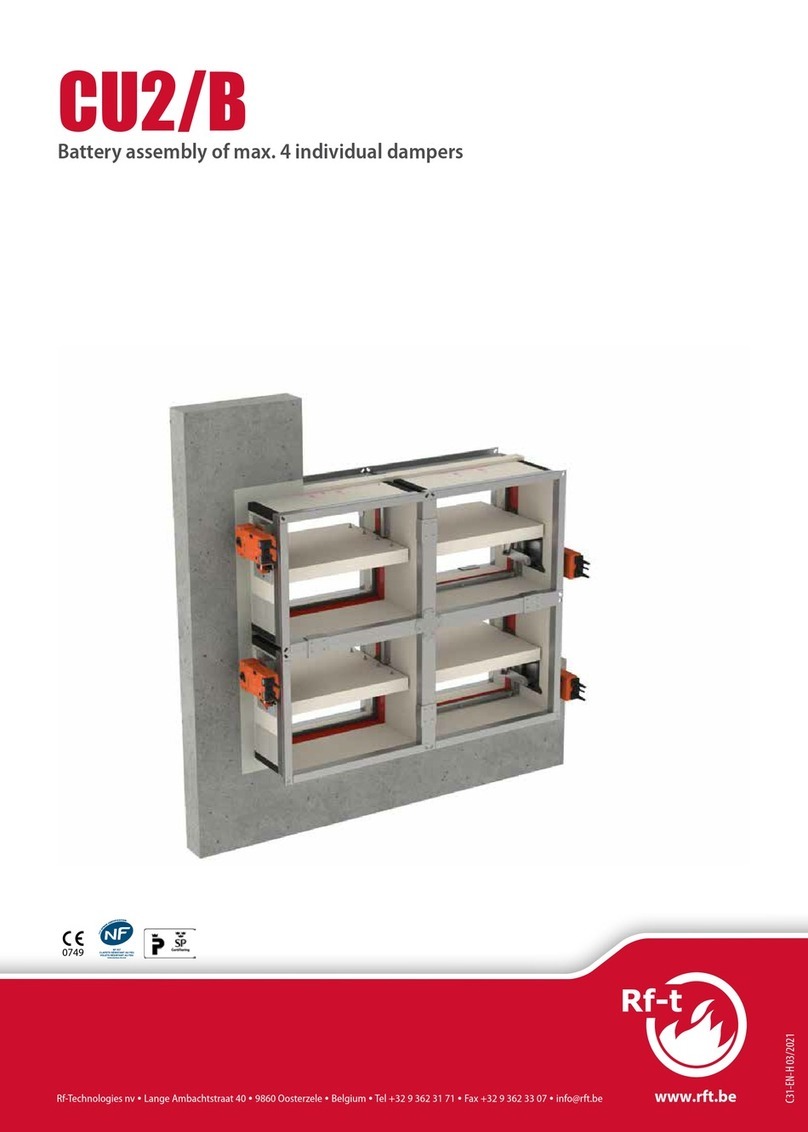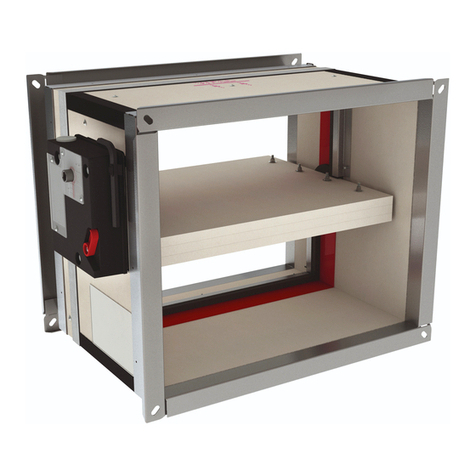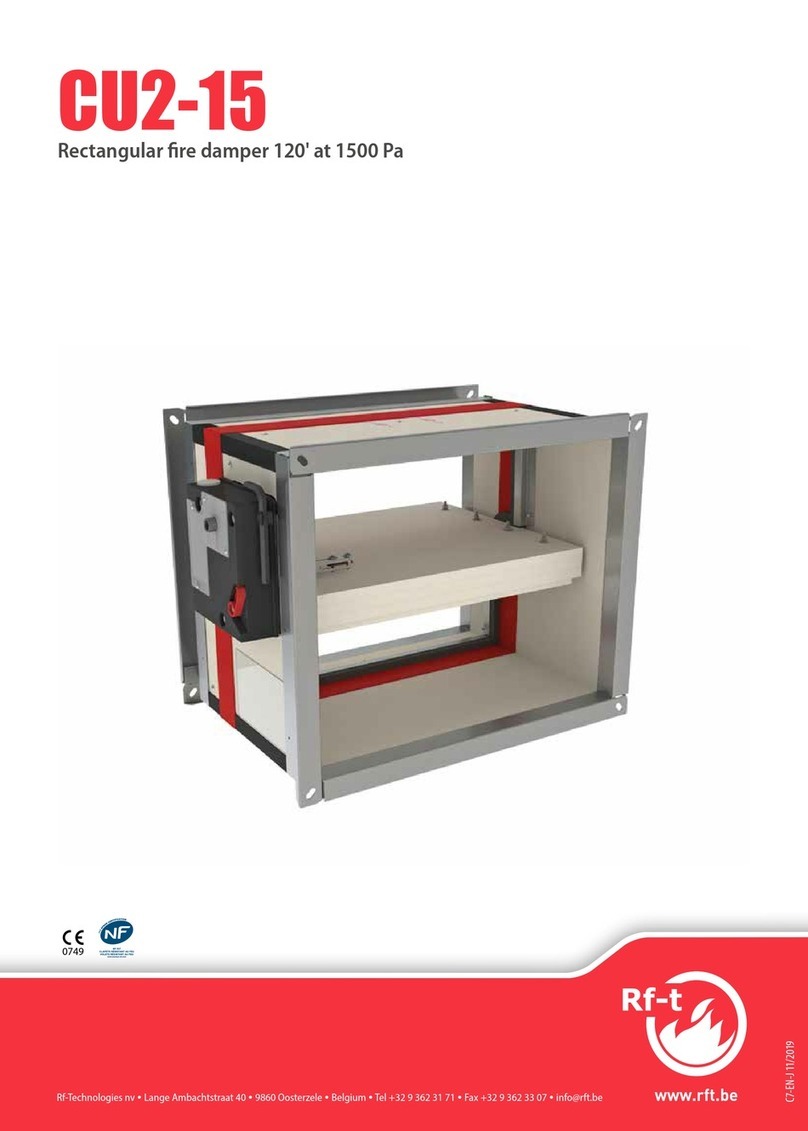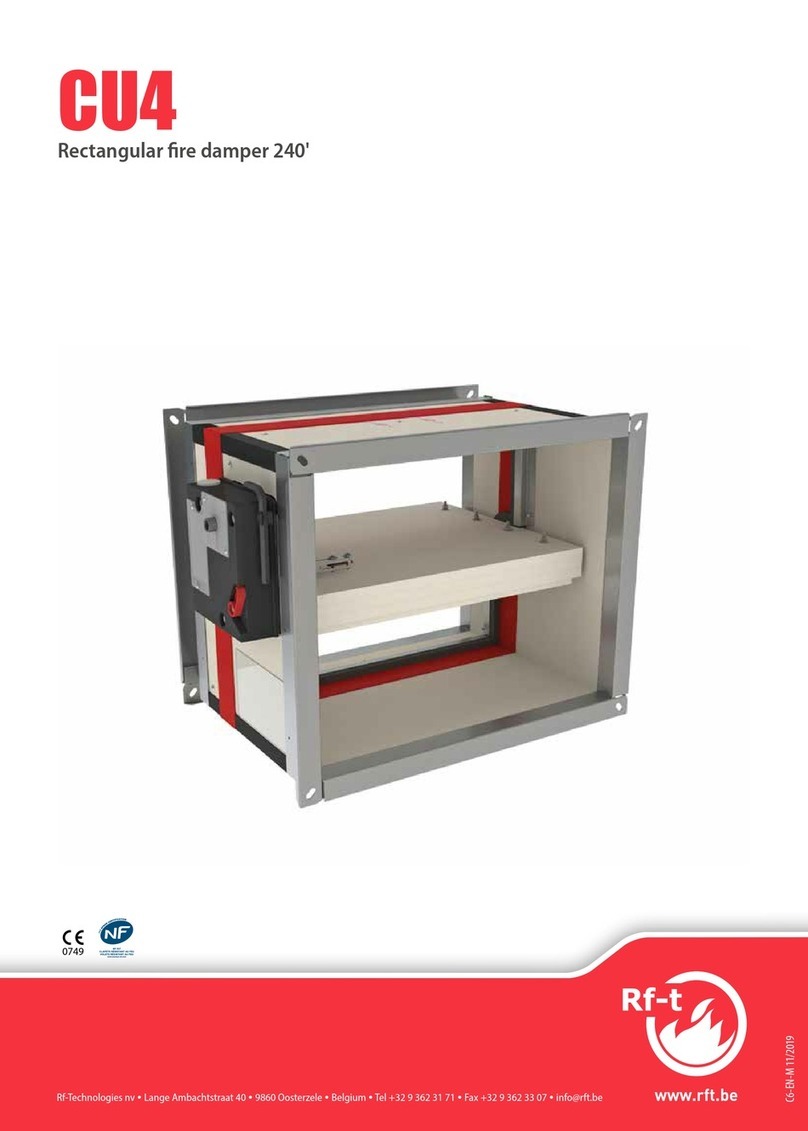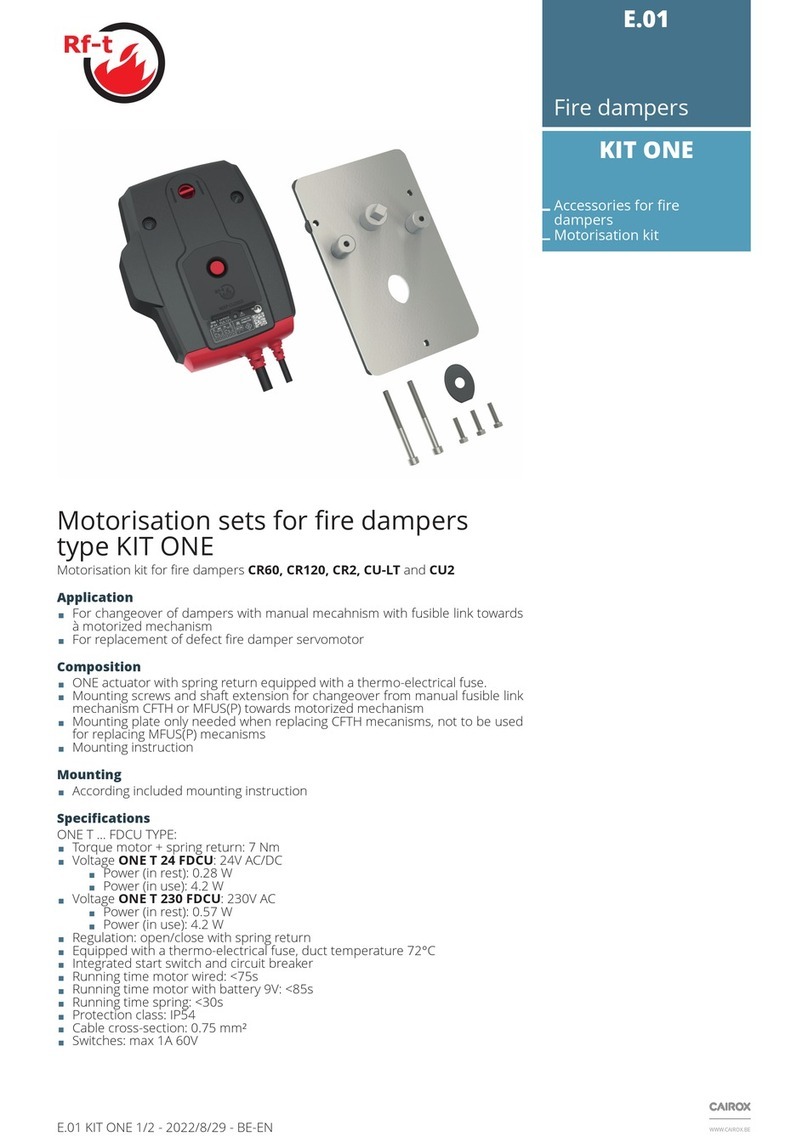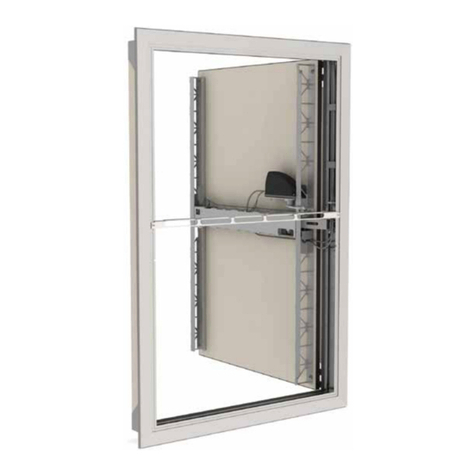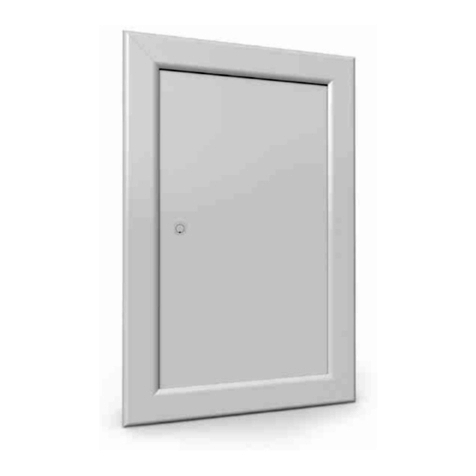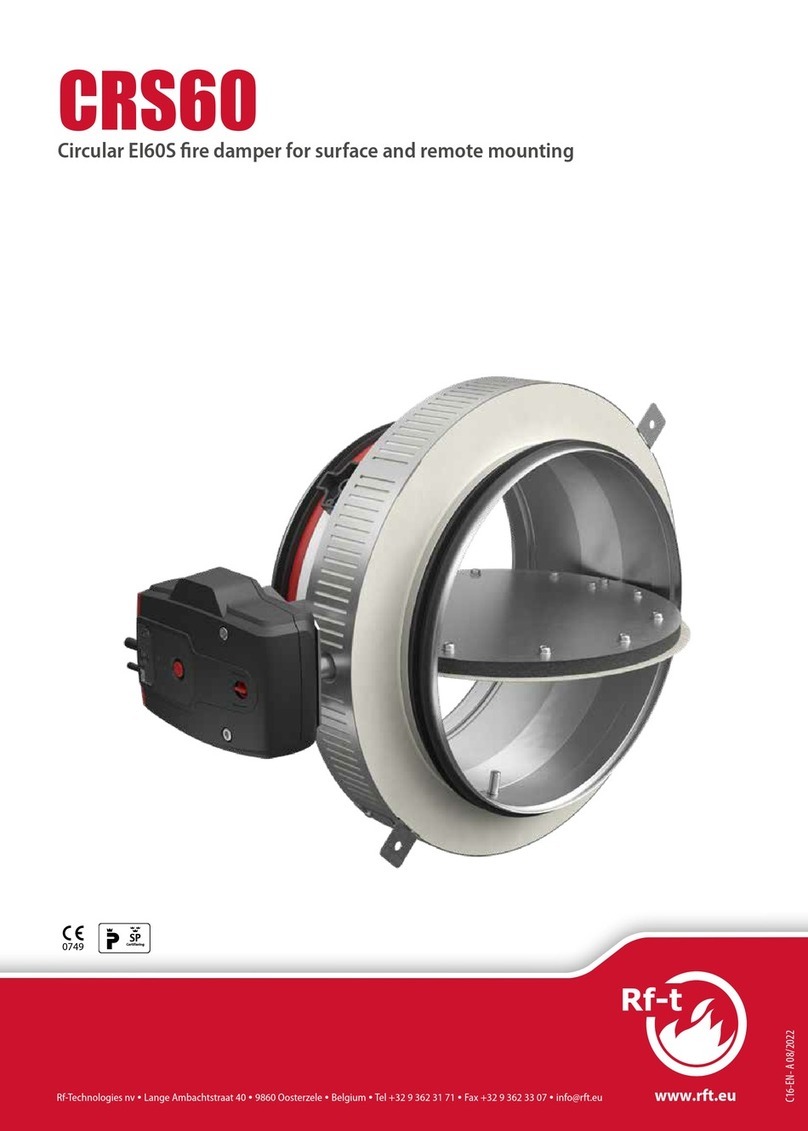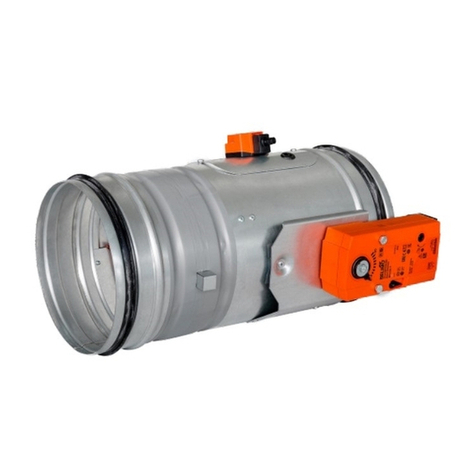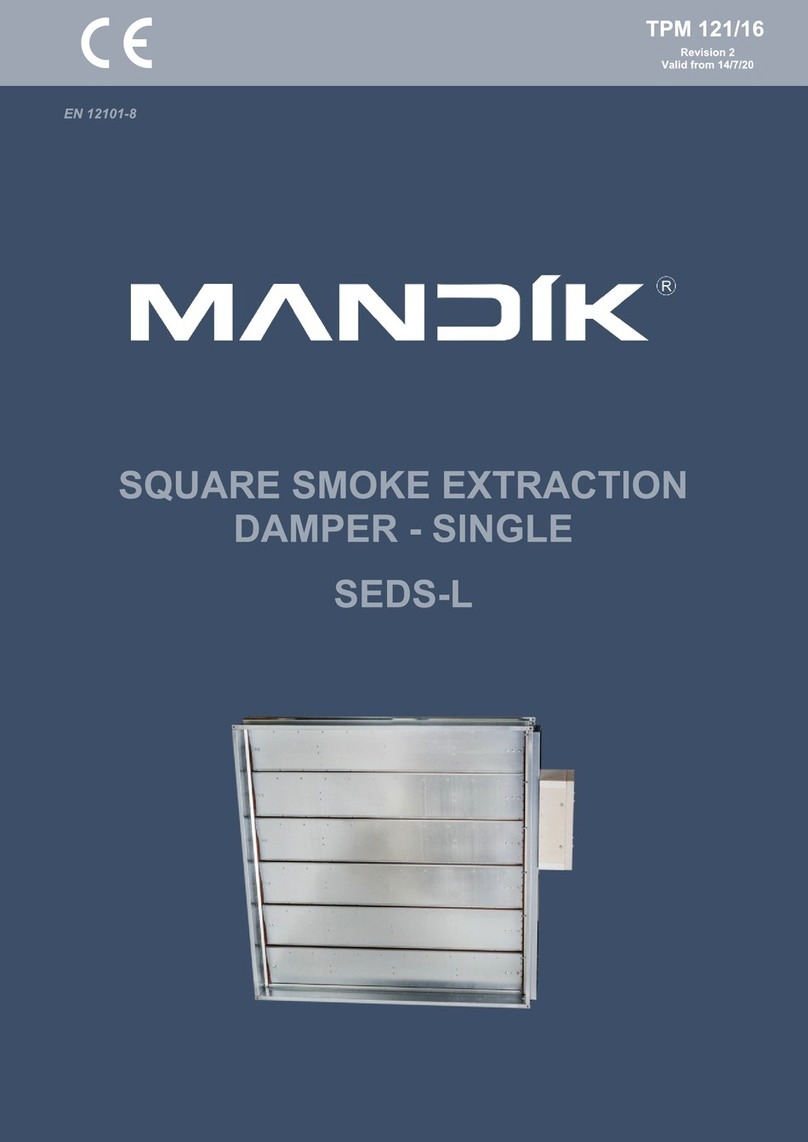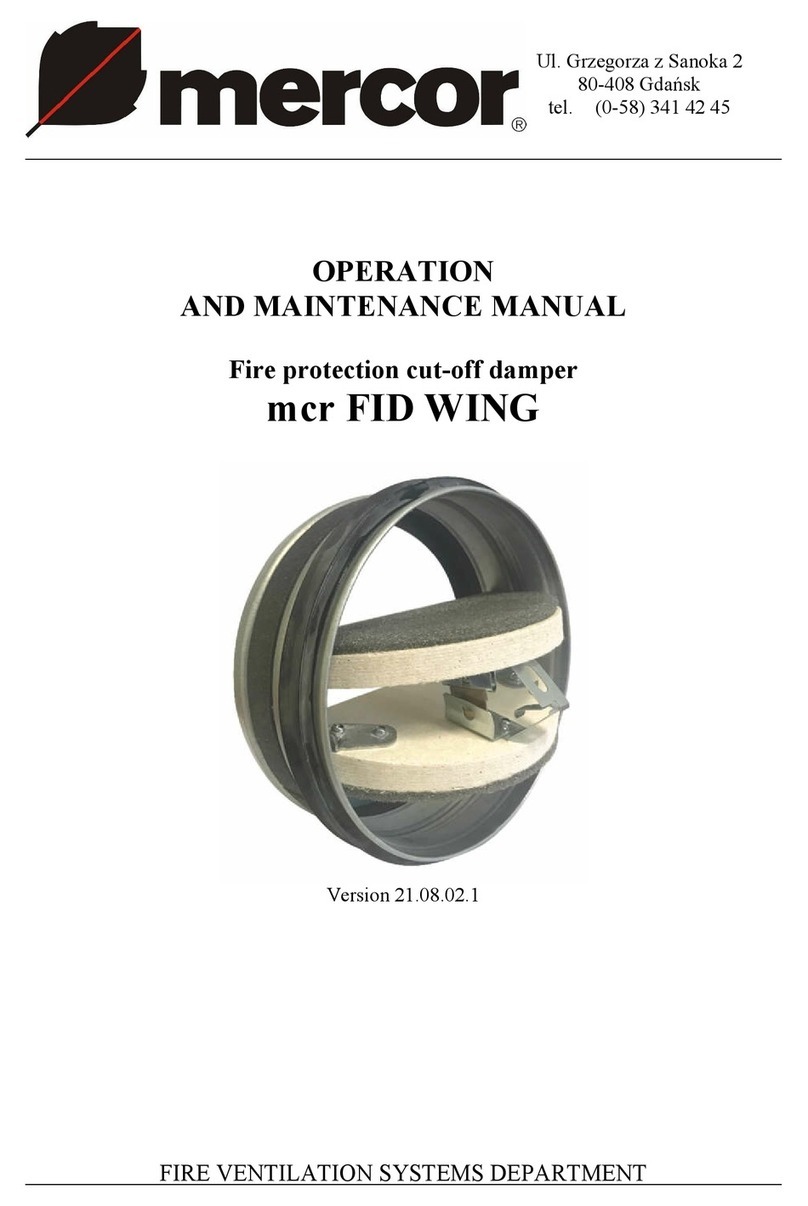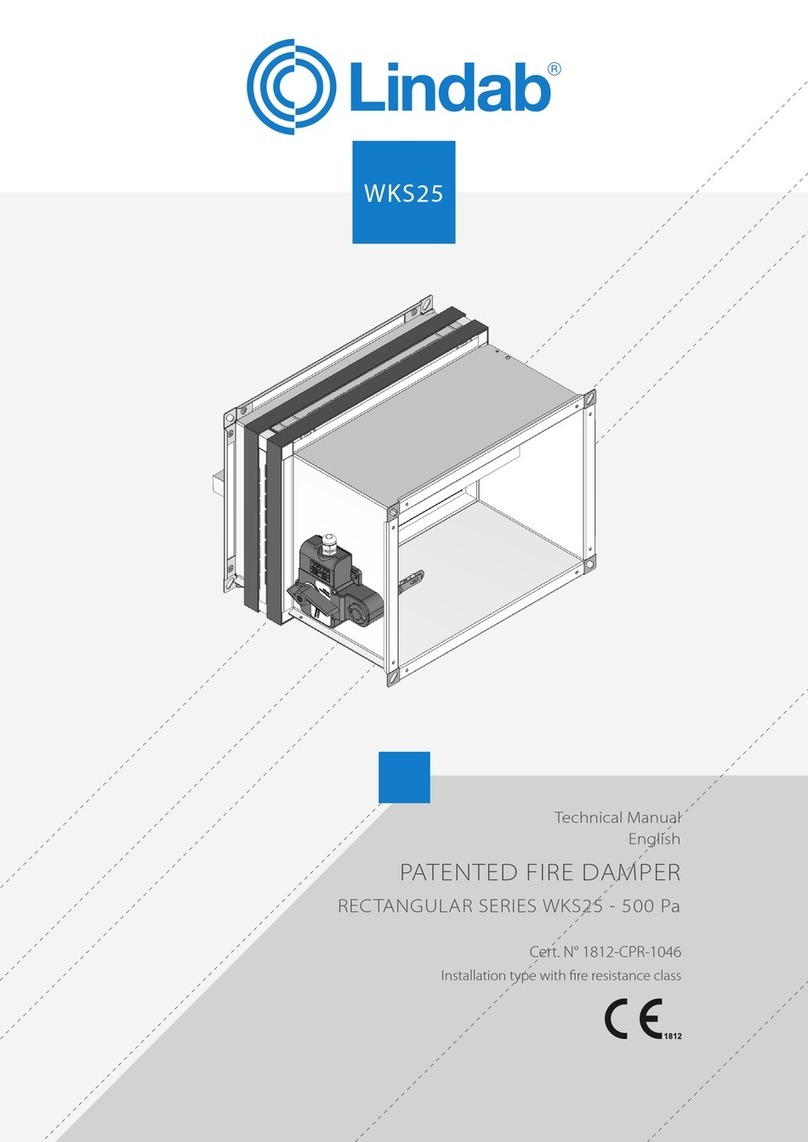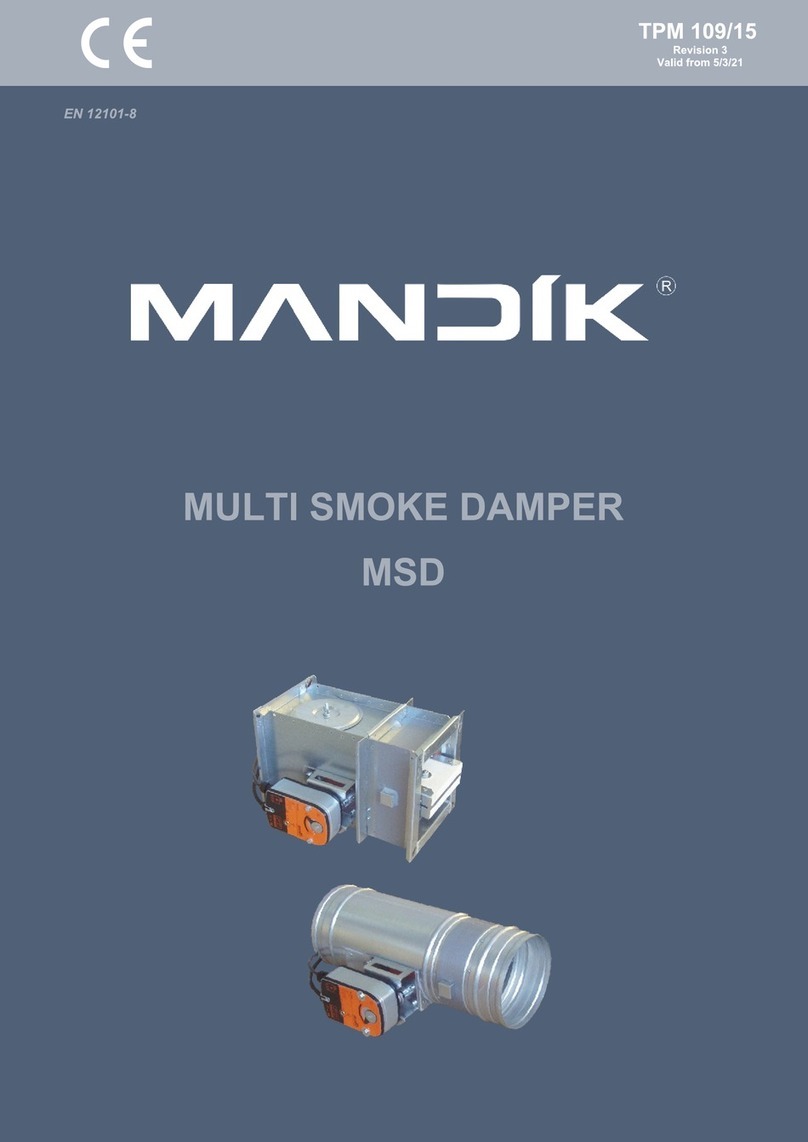
3
Declaration of performance
D-01/2017CE_DoP_Rf-t_C4_EN
DECLARATION OF PERFORMANCE
Declarationofperformance
CE_DoP_Rf-t_C4_EN
D-01/2017
1. Unique identication code of the product-type: CA2
2. Intended use/es: Rectangular re damper to be used in conjunction with partitions to maintain re compartments in heating, ventilating and air conditioning installations.
3. Manufacturer: Rf-Technologies NV, Lange Ambachtstraat 40, B-9860 Oosterzele
4. System/s of AVCP: System 1
5. Harmonised standard / European Assessment Document; notied body / European
Technical Assessment, Technical Assessment Body, notied body; certicate of
constancy of performance:
EN 15650:2010, BCCA with identication number 0749; BC1-606-0464-15650.07-0464
6. Declared performance according to EN 15650:2010 (Fire resistance according to EN 1366-2 and classications according to EN 13501-3)
Essential characteristics Performance
Range Wall type Wall Sealing Installation Classication
200x200 mm ≤ CA2 ≤
700x700 mm
Rigid wall Aerated concrete ≥ 100mm Not applicable 1 EI 60 (vei no) S - (500 Pa)
1 Type of installation: surface-mounted, 0/180°
Nominal activation conditions/sensitivity: Pass
Response delay (response time): closure time Pass
Operational reliability: cycling
CFTH - 50 cycles; MANO - 300 cycles; B(L)
F(T) - 10000 cycles; BFL(T) - 10000 cycles;
BFN(T) - 10000 cycles; ONE - 10000 cycles;
UNIQ - 300 cycles
Durability of response delay: Pass
Durability of operational reliability: Pass
Protection against corrosion according to EN 60068-2-52: Pass
Damper casing leakage according to EN 1751: ≥ class B
Harmonised standard
EN 15650:2010
The performance of the product identied above is in conformity with the set of declared performance/s.This declaration of
performance is issued, in accordance with Regulation (EU) No 305/2011, under the sole responsibility of the manufacturer identi-
ed above.
Signed for and on behalf of the manufacturer by:
Barbara Willems, Technical Manager
Oosterzele, 01/2017
